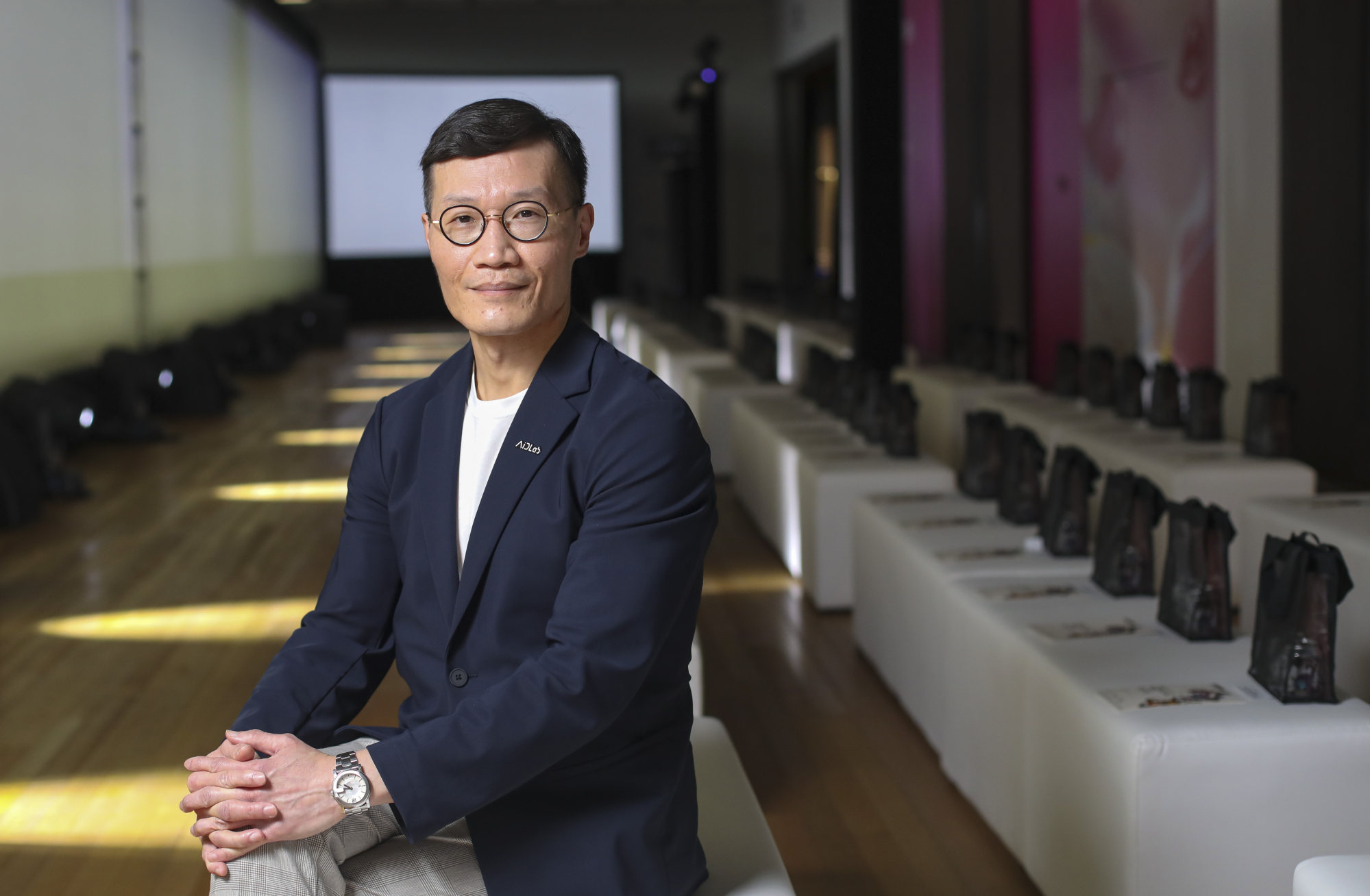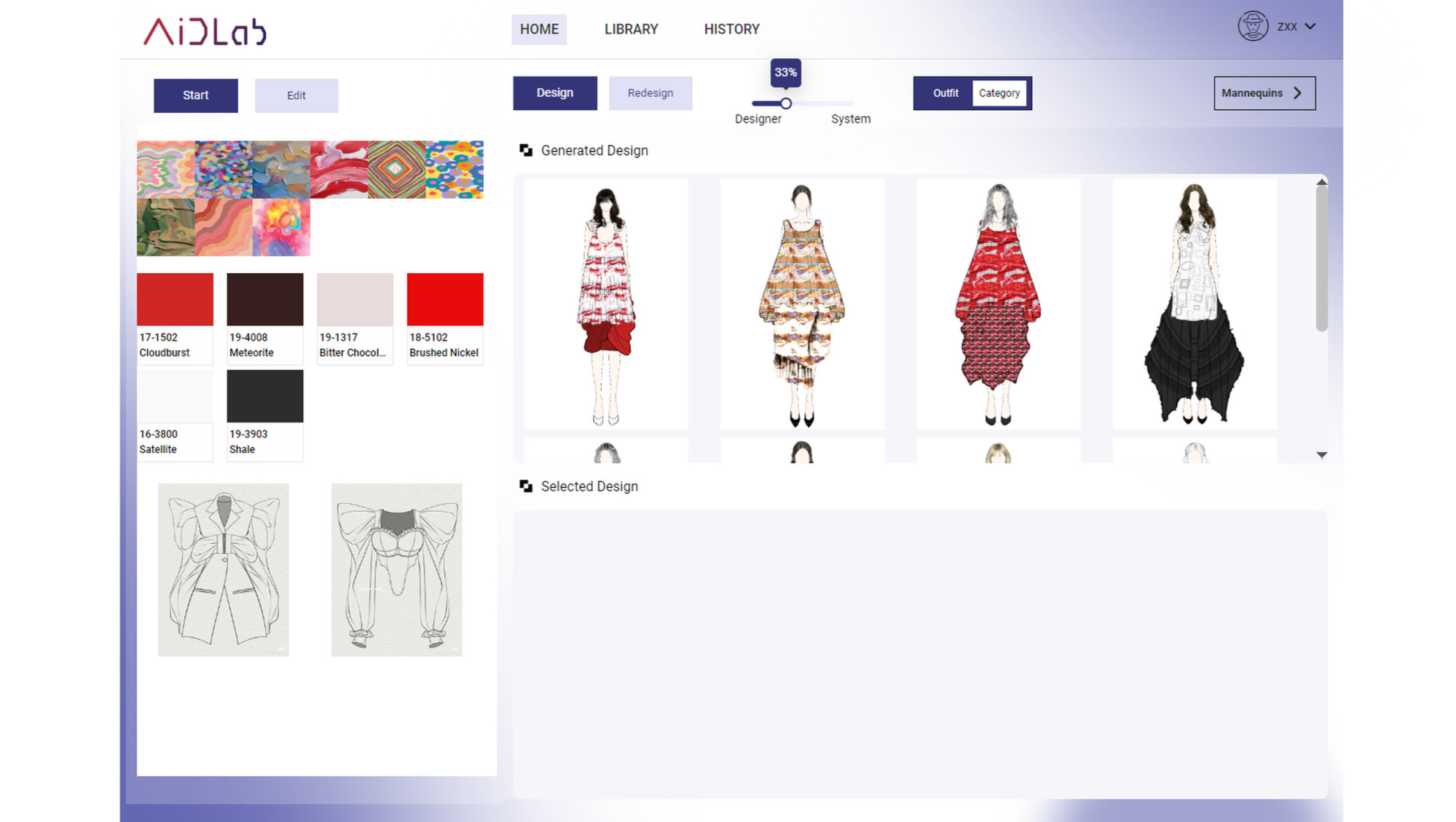
Flash fashion: Hong Kong artificial intelligence software gives designers fresh ideas in just 10 seconds
- System produced by AI research centre lets designers retain their individual creativity, preferences
- Software shortens the traditional work process by tossing up suggestions that designers can tweak
Fashion designers are taking to an artificial intelligence (AI) software system developed in Hong Kong that taps into their individual styles and preferences to generate images of new outfits in mere seconds.
Industry veteran Vivienne Tam, who has embraced technology in her fashion design, welcomed AI as a tool to inspire designers without compromising originality, creativity or personal taste.
“You can treat it as a game and I think it’s fun,” she told the Post. “It provides designers more possibilities and references for inspiration.”
That is exactly what Professor Calvin Wong Wai-keung said he hoped for when his team of information technology, engineering and fashion specialists and academics developed AiDA, short for AI-based Interactive Design Assistant for Fashion.

“The existing technology is mainly for designers to draw and computerise their creations without their inspiration inputs. That’s why we created AiDA, which is a designer-led system to spark more inspiration for them,” said the chief executive officer of AiDLab, a research centre established jointly by Polytechnic University and London’s Royal College of Art in 2020.
The software allows a designer to upload the “mood board” for a coming collection, providing a summary of inspirational sketches, themes, fabrics and trims, patterns and the preferred range of colours.
In just 10 seconds, AiDA’s algorithm then used these inputs to generate designs for eight outfits which the designer could tweak in any way, Wong said.

He stressed that AI was not meant to replace human designers, but to help spark inspiration, provide new ideas and speed up traditional processes.
“It usually takes weeks for designers to go from creating a mood board to finalising their designs with computerised images. For brands, it may even take two to three months for the creative director’s amendments and approval,” he said.
AiDLab was one of 28 research centres or laboratories set up with help from the Hong Kong government’s InnoHK Research Clusters initiative to develop the city as a hub for global research collaboration.
Designer Tam, 65, who was based in New York before returning to Hong Kong during the Covid-19 pandemic, has been enthusiastic about recognising technology’s role in fashion.
Her recent collaboration with Cantopop singer and actor Leon Lai Ming’s fashion concert last month showcased her Web3-inspired Spring-Summer 2023 collection – Metaverse, past, present and future.
She said while it was exciting that AI could help designers, human beings remained in control.
“Designers don’t need to follow what AI generates, but have a look and use it as a reference. Design is very personal and designers have the final say,” she said.

Technology allowed designers to dress as many avatars as they liked, but wearability and practicality mattered when transforming online ideas for use by people in the real world.
“A collection involves the designer’s personal style, personality, and whether the outfits suit the shape and skin tone of the models, as well as have commercial value. There’s a lot to consider,” she said.
Last month, six international and Hong Kong designers and eight local young talent picked from 200 applicants presented more than 80 outfits created with AiDA’s help.
Italian luxury brand Anteprima used the system to create its latest collection which it showed virtually at the event, held at the M+ museum.

Hong Kong designer Mountain Yam, 39, who showed an eight-piece collection at the event, described himself as “a traditional designer who loves sketching by hand and then working on computerised visuals”.
He said using AI saved him time and was inspiring too.
“The more I use it, the more it learns my aesthetic,” he said. “With my styles incorporated into its database, the system may propose something I might never have thought of.”
Chinese men’s fashion brand popular with celebrities closes shop amid weak demand
That allowed him to work on the suggested designs to produce something new of his own.
Starting as a handbag and uniform designer after graduating from fashion school in 2008, Yam registered his brand in 2011 and established his company in 2014.
He said that in recent years, however, he hit a creative rut and experimenting with technology and AI had helped.
“I hit a point where I felt like I was doing the same thing and wanted to explore new ideas. That’s why I turned to AI,” he said.


